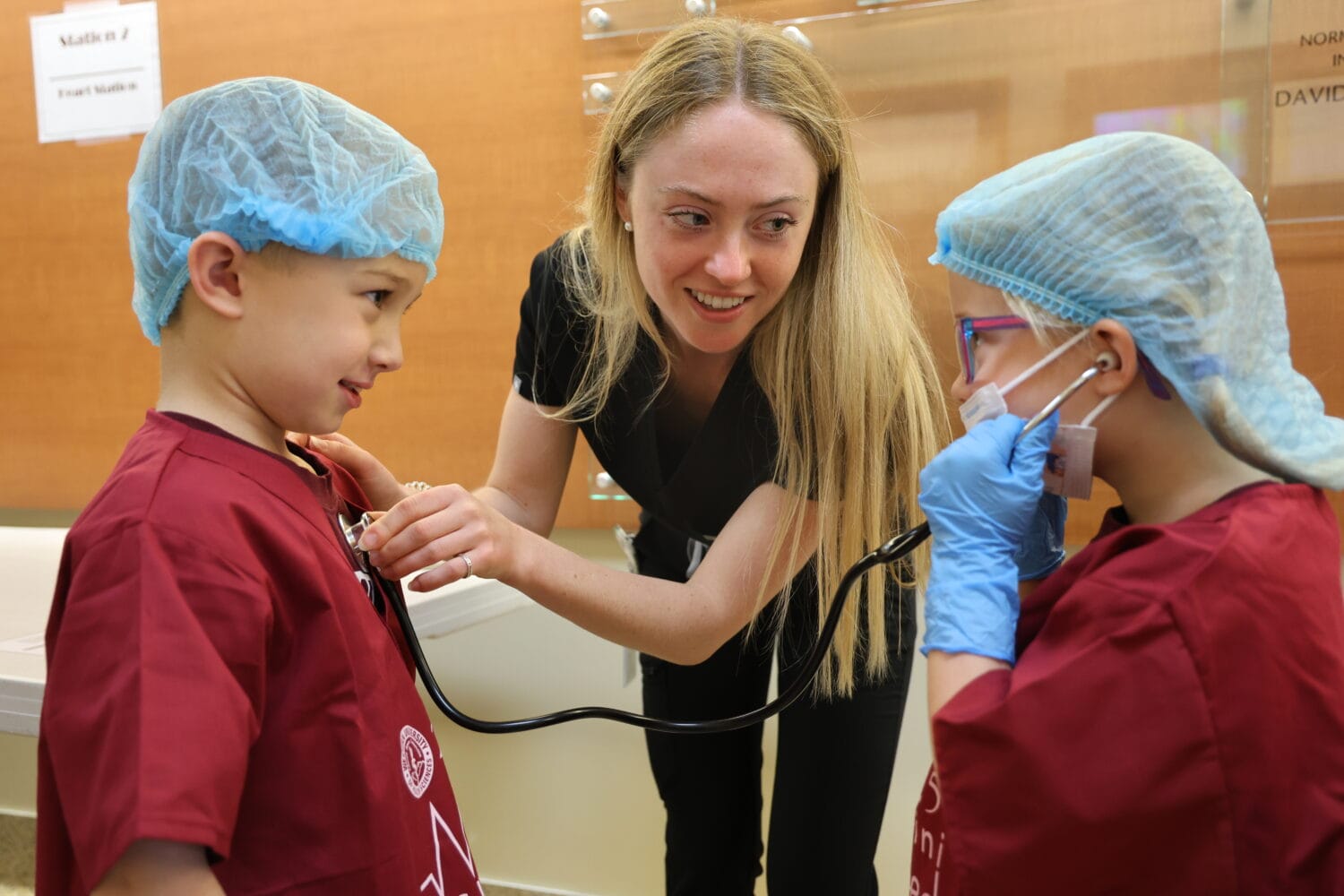Groundbreaking for new Veterinary Medicine Center Set for March 19
Tuesday, March 19, will see the groundbreaking for the College of Veterinary Medicine –
the first and only veterinary school in Southern California — at Western
University of Health Sciences in Pomona, about 30 miles east of downtown
Los Angeles
Presiding over the ceremony will be university President Philip Pumerantz,
PhD, and Shirley Johnston, PhD, DVM, founding dean of the college, which
is the first and only veterinary medical school in Southern California.
Special guests will include Dr. Marty Becker, author of “”The Healing Power
of Pets,”” American Veterinary Medical Association (AVMA) President Dr. Jim
Brandt, Pomona Mayor Edward Cortez and Senator Nell Soto of the California
Legislature.
A throng of veterinarians, university faculty, staff and students will
witness the milestone event. Plans call for several celebrated companion
and working animals mentioned in Dr. Becker’s book to be on hand. These
animals – a horse, several dogs and a lizard – have rescued humans from
disasters and diseases and helped others to improve their lives.
Last March, the college received a letter of reasonable assurance from the
accrediting body of the AVMA, allowing faculty to be hired, students
recruited and funds raised for reconstruction of the vacant building into
the Veterinary Medicine Center. Work will begin in September to expand
the existing building to 24, 550 sq. ft. at a cost of approximately $3.7
million.
When the college opens its doors to students in fall 2003 it will join the
University of California, Davis as the only veterinary medical schools in
California. In fact, no new college of veterinary medicine has opened in
the United States since 1983, and an acute shortage of veterinarians
exists in California. UC Davis opened in 1948 and accepts approximately
122 new students a year – in a state with nearly 35 million residents.
The new veterinary school will help ease a shortage of veterinarians in
Southern California and throughout the state. The ratio of veterinarians
to people in Los Angeles County is 10/100,000. The AVMA prefers a ratio
of 17.8/100,000. Nationally, about 7,000 students apply each year for
2,300 slots at 27 colleges of veterinary medicine.
The four-year program, which leads to a Doctor of Veterinary Medicine
(DVM) degree, will open with 77 students in August 2003. By 2005, the
college plans to enroll 100 new students a year.
“”Our objective is not just to open another college of veterinary medicine,
but to create a new paradigm in veterinary education,”” Dr. Pumerantz said.
The curriculum planned for the new college is particularly innovative.
During the first two years of their academic program, students will
participate in a problem-based learning (PBL) curriculum on campus. PBL
is an alternative to the traditional lecture format of many colleges. It
emphasizes learning basic science in the context of case studies and
acquiring communications skills as small student groups work together to
learn veterinary concepts.
Students in their final two years will rotate through regional veterinary
practices and clinics – similar to what students in human medical schools
do – rather than study in a university-owned veterinary teaching hospital.
Significantly, the curriculum is “”non-consumptive”” with a distinct
reverence for life. Students will master diagnostic and surgical
techniques on models before applying them to living animals. Students
also will participate in well-animal clinical experiences starting their
first year, and will practice surgery techniques via psychomotor-skills
laboratories and computer simulations, not on live animals.
Dean Johnston, the first female dean of a North American veterinary
college, is highly regarded in the veterinary community, particularly for
her work in curriculum development. Her former posts include professor
and chair of the Department of Veterinary Clinical Sciences at Washington
State University College of Veterinary Medicine and professor and
associate dean for Academic Affairs at the University of Minnesota College
of Veterinary Medicine.



